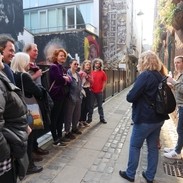2.10. Waste not want not
Key Takeaways 2.9
In a nutshell
Think about all aspects of waste in your business.
Ask staff to stop, think and challenge everything they do.
Waste hierarchy
Waste reduction is not just about ‘recycling’. Of course, recycling is hugely important but is still only a small piece in a complex puzzle. Rather than solely focusing on recycling and responsible disposal, we should really encourage:
Reducing the amount we use in the first place.
Reusing product or product elements, wherever possible.
Then Recycling what is left, wherever possible.
The Waste hierarchy model
This model sets out the levels of options for managing waste in an environmentally helpful way. It gives top priority to preventing waste in the first place.
Once waste is created, it gives priority to preparing it for reuse, then recycling, then recovery, and last of all, disposal (e.g. landfill), which should be avoided whenever possible.
Steps to take
- If possible, work with external waste management partners that specialise in ensuring that as little waste as possible from your operation is directed to landfill.
- Also work with specialist partners who can recycle all WEEE (Waste from Electrical and Electronic Equipment) and batteries correctly.
- Monitor your waste and set targets to reduce it through better management, partners and day-to-day behaviour.
VisitBritain/VisitEngland

Going circular
Unlike the traditional linear approach of take-make-use-waste, a circular economy is a sustainable closed loop model.
It creates value through product recapture and then recycling, restoring and reusing product elements in remanufacturing, thereby radically limiting the extraction of raw materials at the beginning, and the production of waste at the end of a product’s life.
In essence, it involves keeping products and materials in use for as long as possible. This is driving new trends in repurposing items, easy home repair and the increase in second-hand (sometimes called pre-loved) purchasing.
The circular economy concept also challenges the necessity of owning products in the way that we are traditionally used to. It is access to what the product provides that is important, rather than the product itself.
Understanding this shift in mindset lays the groundwork for shifting our economy from linear to circular and can be seen in many examples now from car sharing clubs to fashion rental.
VisitBritain/VisitEngland

Plastics
Pollution comes from many sources in the ocean and other waterways, but one type that is often linked to the tourism industry is plastics. Plastic is the most prevalent type of litter and comes in all shapes and sizes. But those that are less than five millimetres in length (about the size of a sesame seed) are called “microplastics” and they are a particularly difficult problem.
Microplastics
Microplastics come from a variety of sources, including larger plastics that break down into smaller pieces, and laundering of fabrics containing plastics, such as polyester, nylon, fleece and microfibre. In addition, microbeads are very tiny pieces of manufactured polyethylene plastic that are added as exfoliants to health and beauty products such as cleansers and toothpastes.
These tiny particles easily pass through water filtration systems and end up in the ocean, posing a potential threat to aquatic and human life through food chains.
Cleanup and reduction efforts
Removing plastics from the ocean is a priority of local and international efforts, through projects such as the Marine Conservation Society’s Great British Beach Clean and the Ocean Cleanup.
Reducing the demand for single-use plastics is also part of the solution because these items litter and pollute the waterways and oceans if not disposed of correctly. So making reusable items the norm and removing single-use plastic items from use in tourism businesses can have a major impact on life below water.
The first step is to carry out a plastics audit. Assess what single-use plastics you can remove from your operation (such as cups, miniature bathroom amenities, straws, etc). Prioritise reusable items and ditch disposables wherever possible.
Pink Book link on 2.9
The Pink Book on plastics
Are you up to speed on the legislation regarding single use plastics? You'll find more details in the Pink Book along with links for additional resources.
Packaging
Packaging comes in many shapes and sizes: boxes, bags, cans, foam pellets, shrink wrap, tubes, paper, and so on, all of which are designed to protect a product and keep it pristine or fresh.
When considering packaging in your supply chain, make sure you cover the various types:
- Primary packaging: the wrapping or container handled by customers.
- Secondary packaging: larger cases, boxes or bags used to group goods together for distribution, ease of carrying or displaying in shops.
- Transit packaging: pallets, boards, plastic wrap and containers used to collate products into larger loads for shipping.
Stop, Think, Challenge
Stop. Think. Challenge.
Whether you have 5 or 5,000 people in your business, changing their behaviour (including your own) will change your business. When it comes to waste reduction, this kind of collective effort can make a huge difference.
Employee engagement is crucial so keep it simple to keep things moving. Encourage everyone to practice this STC themselves by asking:
- Do we really need this item in the first place?
- Can this item be reused and recycled when we are finished with it?
- If it really needs to be thrown away, am I putting it in the correct bin?







